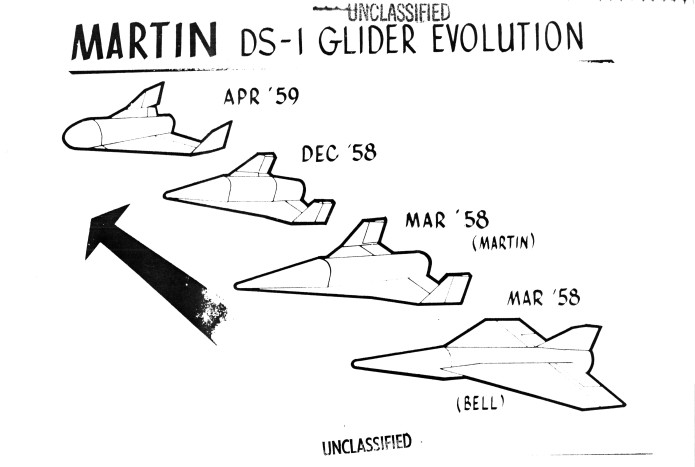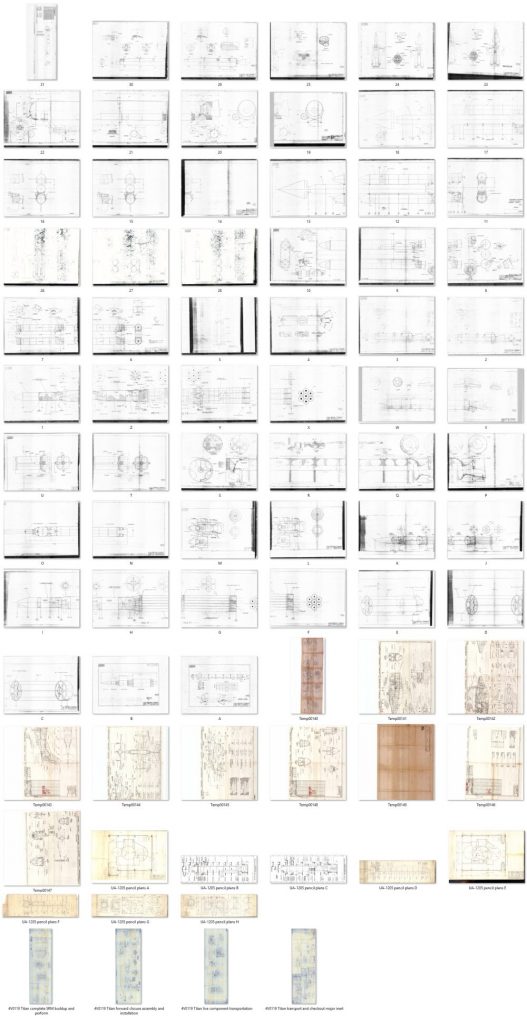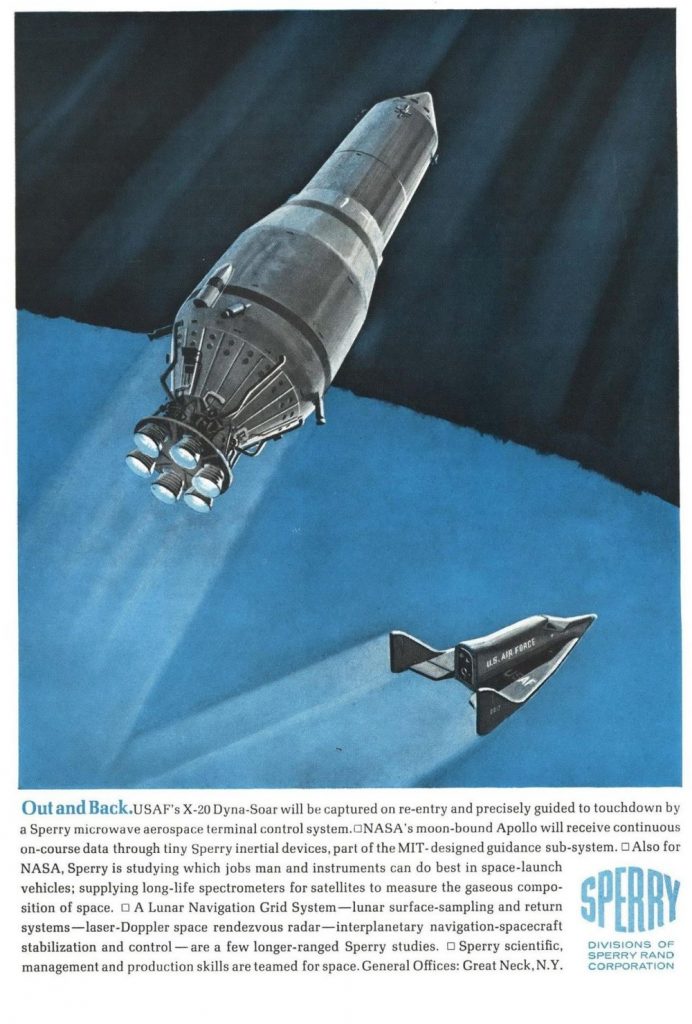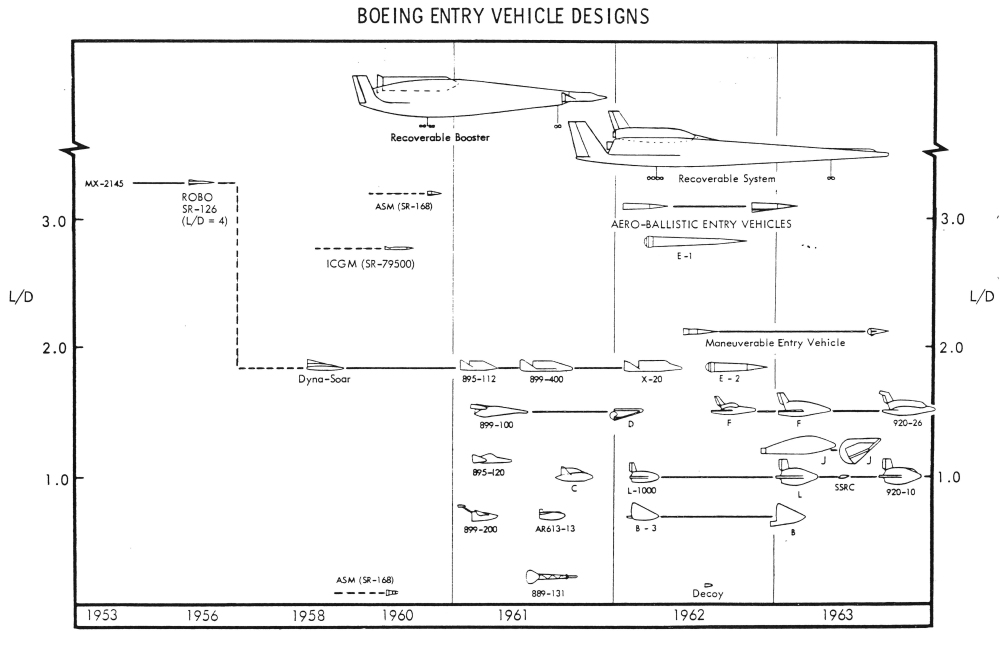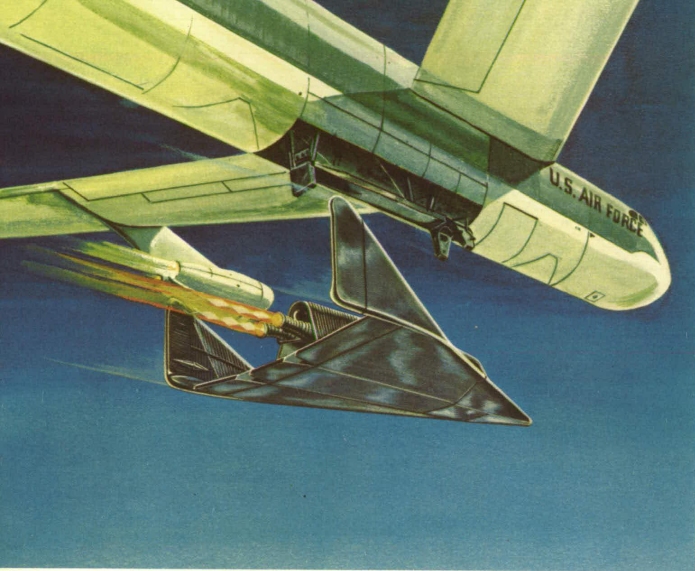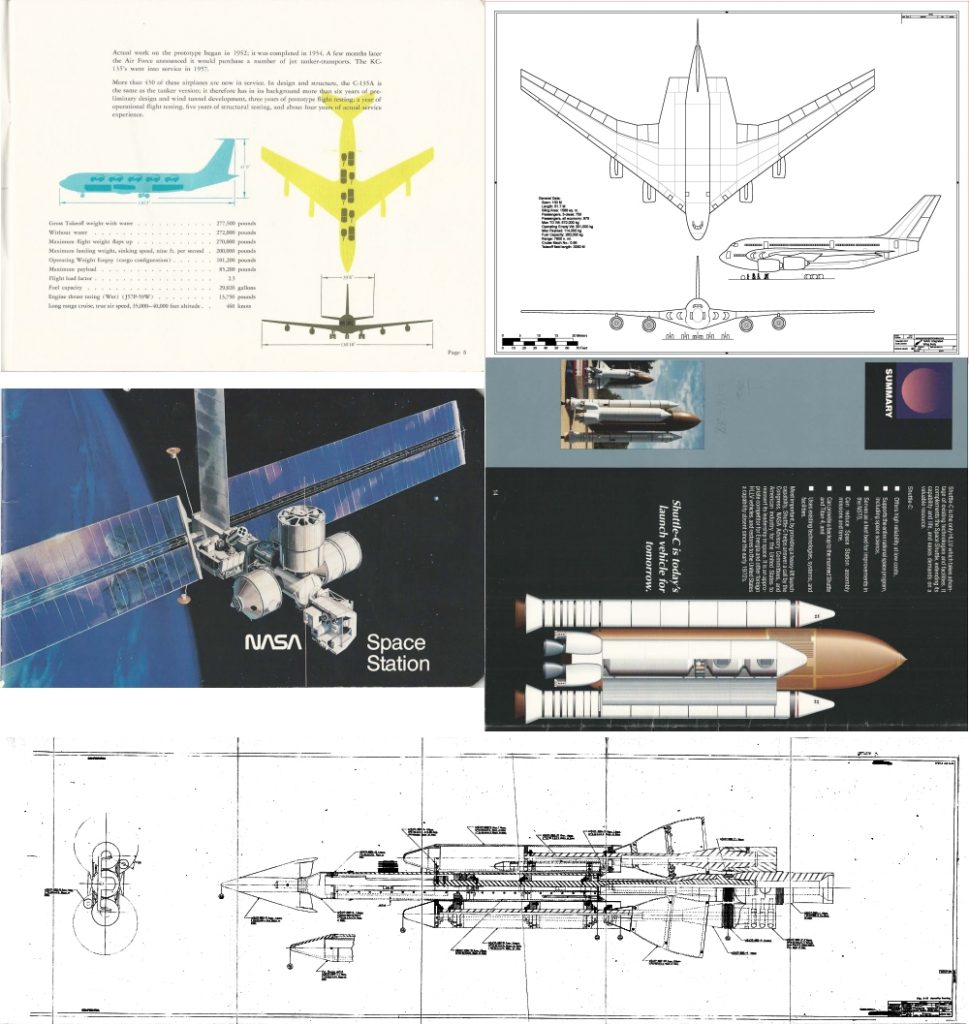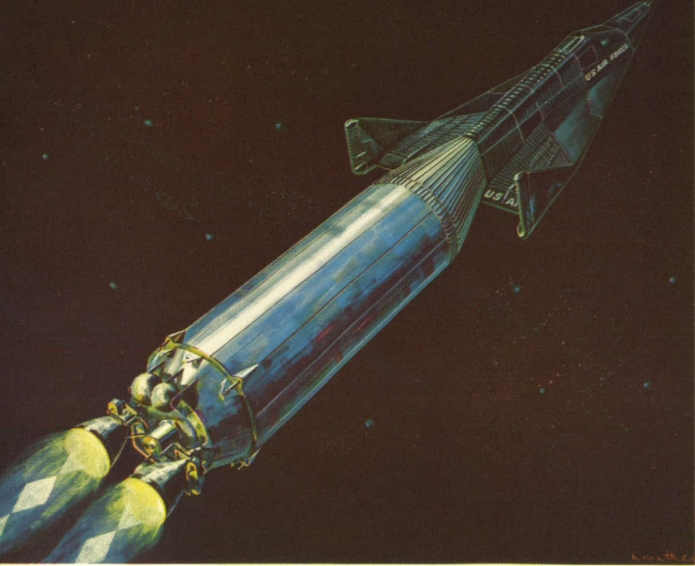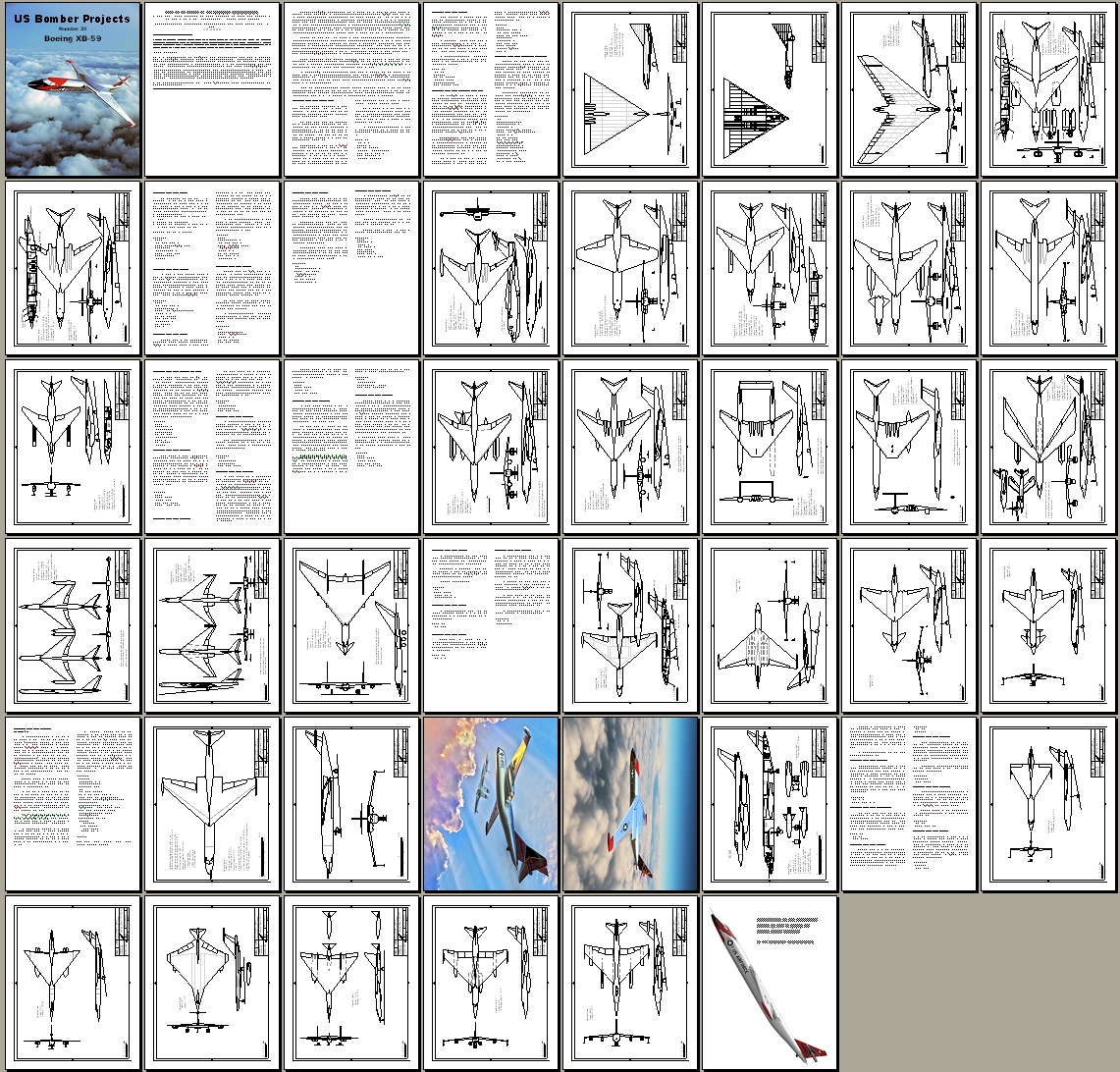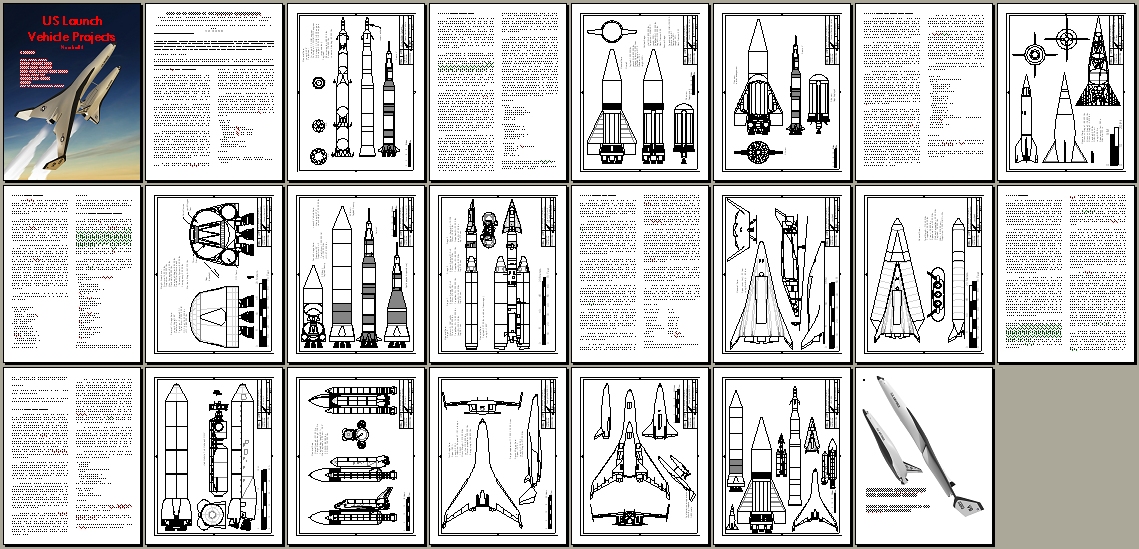From April 1959. Boeing won the competition to build the Dyna Soar with a desing that looked a lot *unlike* the Dyna Soar they actually started building; ironically, Martins design from December 1958 (working with Bell Aircraft) was far closer to the final Dyna Soar in configuration.
Once again Patreon seems to be becoming unstable. So I’ve got an alternate: The APR Monthly Historical Documents Program
For some years I have been operating the “Aerospace Projects Review Patreon” which provides monthly rewards in the form of high resolution scans of vintage aerospace diagrams, art and documents. This has worked pretty well, but it seems that perhaps some people might prefer to sign on more directly. Fortunately, PayPal provides the option not only for one-time purchases but also monthly subscriptions. By subscribing using the drop-down menu below, you will receive the same benefits as APR Patrons, but without going through Patreon itself.
As hinted at here and there, I’ve recently moved from rural Utah to non-rural elsewhere. One of the benefits of the move was that it put me a LOT closer to large format scanning services. Previously getting a large blueprint scanned meant several hours on the road and then a return several days later to pick it up; now the drive is a matter of a few minutes. Consequently, my rather extensive backlog of large format aerospace art and diagrams is finally getting scanned in bulk.
Behold some recent results, mostly involving early Titan III, Saturn and Dyna Soar studies:
Some of these will end up in the monthly “catalogs” for the APR patrons to vote on… and some will end up as “extras” for patrons, particularly for above $10-level patrons. If these sort of images are of interest, or if you are interested in helping to fund the preservation of this sort of thing, please consider becoming a patron, either through the APR Patreon or the Monthly Historical Document Program.
Additionally: if you have large format diagrams that you feel are of aerospace historical interest, let me know. I’m always in the market to buy, rent, borrow such things.
A magazine ad from 1963 showing the S-IV stage and the X-20 Dyna Soar. The Dyna Soar is shown without its adapter section and Transtage, indicating that it is approaching re-entry (note that it is shown with the canopy heat shield still in place). The Saturn S-IV stage, used on a few Saturn I launches, was smaller than the S-IVB that was used on later Saturn Ib and Saturn V launches, and used six RL-10 rocket engines instead of the S-IVB’s single J-2. Also note the three prominent “ullage rockets” sticking out from the base of the stage. These were small solid rocket motors that would impart a slight forward acceleration to the stage prior to the ignition of the RL-10’s. The acceleration would be high enough and last long enough to settle the propellants into the rears of the tanks. Otherwise the liquid propellants would float around in microgravity and might very well not feed properly into the plumbing system; if a turbopump swallowed a large bubble of gas rather than liquid, it could be destroyed.
The Saturn I/S-IV never launched an actual Apollo CSM, but only boilerplate test articles. Interestingly, the BP-16 test article, launched May 25, 1965, stayed in orbit until July 8, 1989.
A Boeing illustration from 1964 showing a number of designs for lifting entry vehicles that Boeing had produced by that point. Most of these are manned vehicle concepts; a few of them are unfamiliar to me. The “B-3 —– B” looks like it might have been an ASSET competitor. The “Recoverable Booster” at top is one of several similar V-shaped designs that used a modestly modified Dyna Soar as the crew capsule up front. One such design was the Model 895 shown (along with competing ASP designs from other firms) in Aerospace Projects Review issue V2N5.
A rare piece of color art depicting an early Dyna Soar being dropped from a B-52. The Dyna Soar is equipped with two rocket engines used to boost it to higher altitude and higher speed (supersonic, though not very supersonic… think the test flights of the M2-F3 and the HL-10). Note that this shows the Dyna Soar having been tucked into a modified bomb bay in the B-52’s fuselage; planning would soon move the Dyna Soar to under the wing, using the same attachment point used by the B-52 to carry the X-15 and the lifting bodies.
Got them done a little early this time, so here’s a review of what the APR Patrons will be receiving:
Patrons will receive:
A proposal brochure on the C-135A cargo transport
A brochure about the Shuttle-C
A well illustrated NASA-produced booklet from the mid 1980’s describing the space station as them conceived
A large format diagram showing a wind tunnel model of the Titan III/Dyna Soar
A CAD diagram of the ca. 2001 Russian TsAGI Integrated Wing Body large passenger transport jetliner
If these are of interest, please consider signing on to the APR Patreon.
I have a number of new aerospace cyanotype blueprints available. Until I can repave the catalog page, I have slapped together a PDF catalog of the new items. Until Wednesday, I’m making these new 12X18 prints, as well as the earlier 12X18 prints, available. The earlier 12X18s are viewable HERE. The new items are in the following PDF file:
If any are of interest, Paypal to the email address in the PDF file, and add a note in the order which items you want…. AND what your mailing address is (PayPal doesn’t automatically add the address to payments like this).
After Wednesday the prints will be again unavailable for a little bit while I retool and work on some things.
UPDATE: over for now. After some retooling I hope to have all the cyanotypes, small and large old and new, available for regular sale.
Another rare piece of early Dyna Soar color art. This one shows the Dyna Soar heading to space atop the centaur upper stage of an Atlas booster. And if you think you are seeing corrugations on the back of the spaceplane, you are correct. At this stage in the design process the Dyna Soar *did* have some fairly massive, un-aerodynamic corrugations, and for the same reason why the SR-71 has corrugations on the wing: to allow for thermal expansion. Why exactly the Boeing Dyna Soar corrugations run crossways to the airflow, I’m a little unclear on. Terrible aerodynamics, but I imagine that’s just the way the structure wanted to flex.
The corrugations rarely appear on the usually simple diagrams you see of early Dyna Soar configurations, but they were there on full-scale mockups.
Now available: two new US Aerospace Projects issues. Cover art was provided by Rob Parthoens, www.baroba.be
US Bomber Projects #20:XB-59 Special
US Bomber Projects #20 is now available (see HERE for the entire series). Issue #20 collects all the previously published articles and diagrams of the XB-59 antecedent designs and updates them. Additionally, more antecedent designs have been included as well as several designs that followed along after the XB-59. The biggest USXP publication yet!
USBP 20 includes twenty nine unique aircraft concepts (the usual issue of USXP has eight designs) from Boeing Models 484 and 701 showing how Boeing evolved the XB-59, their competitor to the Convair B-58 “Hustler.” Beginning with subsonic flying wings, the concept saw concepts both conventional and unconventional before eventually settling on Model 701-299-1, the final XB-59 design. This issue includes a half dozen Model 701 designs that followed along after the cancellation of the XB-59 program.
USBP #20 can be downloaded as a PDF file for only $8.50:
——–
US Launch Vehicle Projects #04
US Launch Vehicle Projects #04 is now available (see HERE for the entire series). Issue #04 includes:
- Space Carrier Vehicle: A US Army lunar rocket with 8 F-1 engines
- Convair Reusable Helios: A stage-and-a-half monster with a gas core nuclear engine
- Boeing Model 896-111: A 1980’s two stage transatmospheric vehicle
- Project RAND Satellite Rocket 3-Stage: A 1947 satellite launcher
- Convair Saturn V-R: An idea on how to make a fully reusable Saturn V first stage
- Lockheed STAR Clipper: A 1968 stage-and-a-half lifting body Space Shuttle
- Shuttle-C: The Shuttle derived vehicle design that came closest to being built
- Titan III Growth/156-inch boosters: A more powerful version of the Titan III for Dyna Soar launch
USLP #04 can be downloaded as a PDF file for only $4.25:
——–
Also recommended, these previous Specials:
US Bomber Projects #14: System 464L Special
USBP#14 brings together the competitors to Weapon System 464L, the first major effort in the Dyna Soar program. These designs were previously shown individually in prior issues of USBP; here they are brought together, with some updates, as well as a few extra diagrams and a section of diagrams formatted for 11X17 printing. This issue includes info and diagrams of the Lockheed, Republic, General Dynamics, McDonnell, Boeing, Douglas, Northrop, North American and Martin-Bell entries as well as their various booster systems. Also included are detailed diagrams of the ultimate Dyna Soar design, the 2050E.
USBP#14 can be purchased for downloading for the low, low price of $6.25.
US Bomber Projects #16: The B-52 Evolution Special
Boeing Model 444 A: A late war turboprop heavy bomber
Boeing Model 461: An early postwar turboprop heavy bomber
Boeing Model 462: A large six-turboprop ancestor of the B-52
Boeing Model 462-5: A six-turboprop B-52 ancestor
Boeing Model 464-17: 1946 four-turboprop strategic bomber, a step toward the B-52
Boeing Model 464-18: a reduced-size version of the 464-17 turboprop strategic bomber
Boeing Model 464-25: a modification of the 464-17 turboprop bomber with slightly swept wings, among other changes
Boeing Model 464-27: a slightly-swept turboprop B-52 progenitor
Boeing Model 464-33-0: A turboprop B-52 predecessor
Boeing Model 464-34-3: A turboprop B-52 predecessor
Boeing Model 464-40: The first all-jet-powered design in the quest for the B-52
Boeing Model 464-40: The first all-jet-powered design in the quest for the B-52
Boeing Model 464-046: A six-engined B-52 predecessor
Boeing Model 464-49: The penultimate major design in the development of the B-52
Fairchild M-121:A highly unconventional canard-biplane
Convair B-60: A swept-wing turboprop-powered derivative of the B-36
Douglas Model 1211-J: An elegant turboprop alternative to the B-52
With additional diagrams of the B-47, XB-52 and B-52B
USBP#16 can be purchased for downloading for the low, low price of $6.25.

